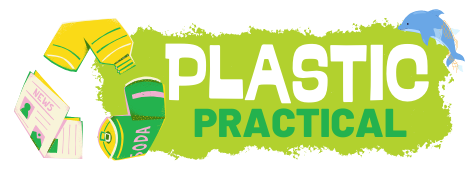I switched shiny, unrecyclable wrap for kraft paper, washable furoshiki, and natural twine to cut waste while keeping gifts attractive. Kraft’s low cost and recyclability make it a reliable base, and cloth wraps can be reused for years, eliminating single‑use waste. Jute or cotton twine and paper tags keep packages compostable. Reusable bags or boxes add value and avoid immediate disposal. Keep going and I’ll show practical materials, storage tips, and presentation ideas.
Key Takeaways
- Choose uncoated kraft or plain paper for recyclable, low-energy, and affordable wrapping.
- Use fabric wraps (furoshiki, cotton, linen) to create reusable, washable, and durable presentations.
- Replace metallic ribbons and bows with jute, cotton twine, or fabric ties that are compostable and reusable.
- Decorate simple paper with stamps, natural elements, or recycled tags to personalize without coatings.
- Gift in reusable containers (boxes, pouches, bags) so the wrapping becomes a practical part of the present.
I’ve found that simple changes to how we wrap gifts cut waste and save money without sacrificing style, so in this piece I’ll show practical, evidence-backed alternatives you can start using today.
Shiny plastic wrap — the glossy, laminated paper and metallic films — looks attractive but commonly ends up unrecyclable and in landfill. Data from municipal recycling programs show contamination and low recovery rates for laminated or metallized papers, so replacing them reduces environmental burden. I’ll outline replacements that are widely available, durable, and often cheaper over time.
Glossy, laminated and metallic wraps look nice but often aren’t recyclable—choose durable, affordable alternatives to cut landfill waste.
Start with kraft paper. It’s low-cost, recyclable, and biodegradable when uncoated. I use plain kraft and add personality with stamps, twine, or a sprig of evergreen; the result is elegant and fully recyclable.
Studies on paper lifecycle impacts show that simple paper with minimal coatings has lower energy and pollution footprints than heavily treated decorative papers. When you buy in bulk, kraft can cost a fraction of glossy specialty sheets and store neatly.
Fabric wrapping — furoshiki or upcycled textiles — is my go-to for delicate or oddly shaped items. Cotton or linen squares can be washed and reused for years. Textile-based wrapping eliminates single-use waste altogether.
Research on circular textiles highlights that when items are reused multiple times, their per-use environmental impact drops sharply. I keep a small basket of fabric wraps and find guests appreciate the extra thoughtfulness.
For ribbon alternatives, choose natural fibers like jute or cotton twine, which are compostable. Avoid metallic ribbons and bows that contain PET or PVC; those are nearly impossible to recycle.
You can also reuse gift bags and tissue from prior holidays — their cumulative carbon footprint is lower when reused, according to waste reduction analyses. Labeling items with paper tags tied on with twine keeps the whole package compostable.
If you want shine without plastic, look for metalized-effect paper that’s explicitly recyclable or coated with recyclable polymers; verify with your local recycler. Some manufacturers now offer home-compostable glitter made from cellulose — it gives sparkle without microplastic pollution.
When in doubt, prioritize materials certified by credible ecolabels or backed by third-party lifecycle assessments.
Finally, make unwrapping part of the gift: reusable bags, cloth pouches, and decorative boxes become part of the present and avoid immediate disposal.
I’ve found this approach reduces waste, lowers annual wrapping costs, and often increases recipient satisfaction. Try one or two alternatives this season and measure how much less you toss afterward — small choices add up.
Frequently Asked Questions
Can Shiny Plastic Be Recycled Curbside?
Usually no — I checked local recycling guidelines and learned shiny plastic wrap and metallic gift films often contaminate batches. I recommend removing non-recyclable shiny bits, using paper alternatives, or taking film to specialty drop-off sites.
Are There Biodegradable Shiny Wrapping Options?
Yes — I found biodegradable shiny options: metalized compostable papers and PLA-coated tissue work, but check certifications and local compost rules; I’ll help you pick durable, sparkly papers that actually break down and meet standards.
Do Metallic Ribbons Harm Compost Piles?
No — metallic ribbons usually don’t belong in compost; they’re often plastic or metalized and won’t break down, contaminating finished compost. I recommend removing them and using compostable ribbons like paper or natural fiber alternatives.
How to Safely Store Reusable Fabric Wrap?
Around 70% of people reuse wraps—so I store reusable fabric wraps flat, clean, and dry in breathable cotton bags, label by size, avoid plastic bins, air them occasionally, and keep cedar sachets to deter moths and odors.
Can Shiny Paper Trigger Airport Security Alarms?
Yes — shiny paper can sometimes trigger security alarms if it contains metallic foil or dense adhesives that show up on X-rays; I recommend removing metallic elements or using matte alternatives to avoid delays and additional screening.

